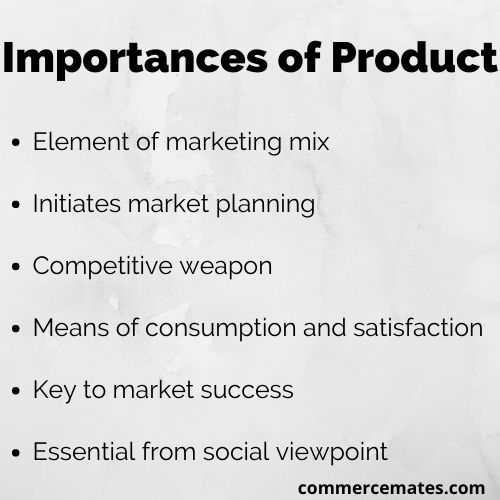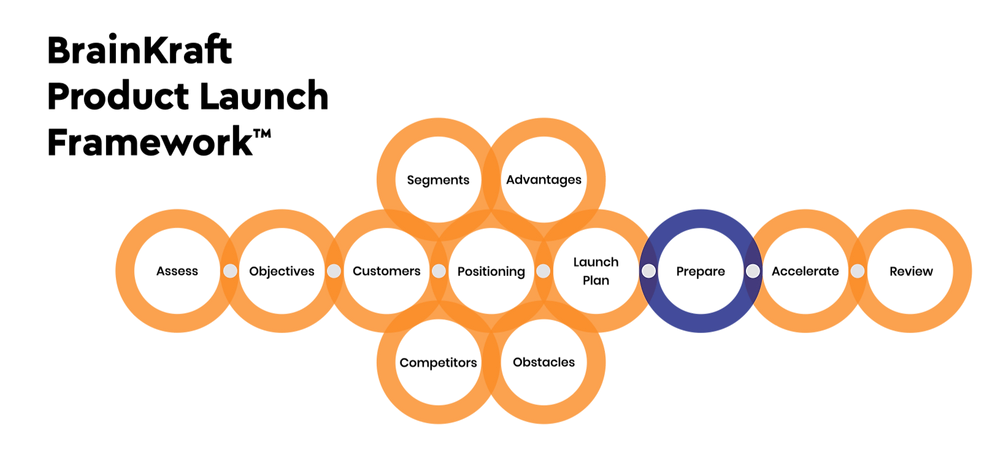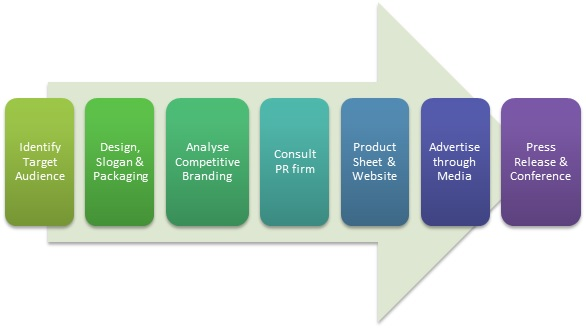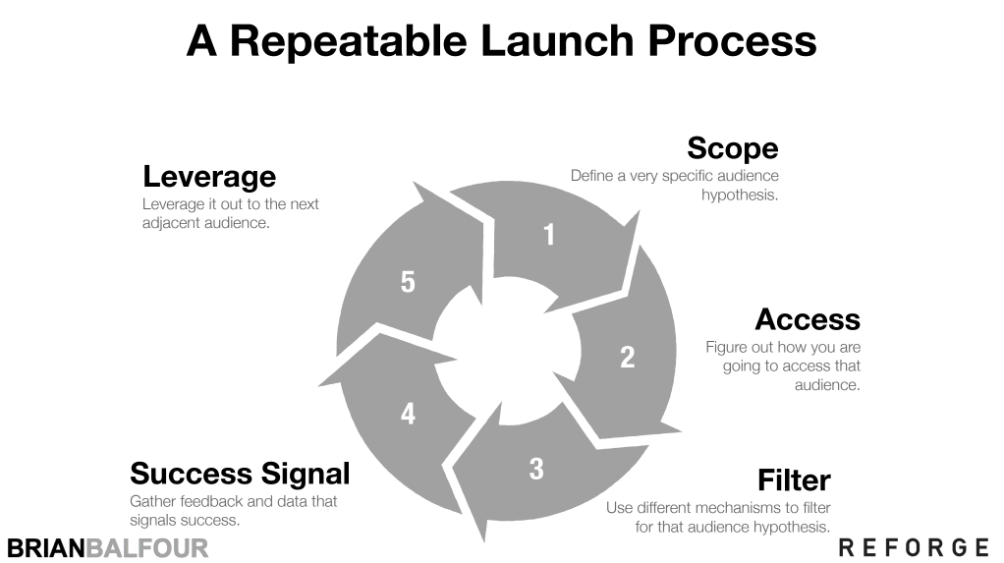How to Launch a Product: The Expert Product Marketer’s Way

Table of Contents
- Importance of Product Marketing
- Things to Have in Place Before a Product Launch
- Preparing for a Product Launch
- Things to do During the Pre-Launch Process
- The Process in Mastering a Product Launch
- Key Takeaways
- Conclusion
- FAQs
Imagine this; you have a brilliant new product or service in mind that, you believe, will rock the world. You know it in the depth of your heart that the product or service should touch a chord with the audience. Besides having every critical ingredient in your product or service, the secret sauce to making your product or service successful is understanding and executing the science behind how to launch a product in the market.
For a product or service to see success, one needs to take many steps, even before the actual product or service sees the light of day. Key amongst them is careful planning and relentless focus towards its execution.
To achieve success and ensure that you meet your goals with the product, you need to focus on more than just the launch day itself. The pre-launch, launch-day, and the post-launch stage, all play a significant role in how to launch a new product in the market. Various steps need to be taken in each of the abovementioned stages to achieve success and enjoy the rewards you envisioned from the product or service.
Read on for some of the best product launch tips and product marketing tips that can help you with your quest on how to launch a product.

Importance of Product Marketing
To understand the importance of product marketing and product launch tips, it is essential to understand product marketing. Wikipedia defines product marketing as a strategic marketing function that helps bridge the gap between product management and marketing communication. In simple words, product marketing performs the function of bringing a product to the market, communicating about the same to the target audience, and helping sell the product or service to the audience.
Some of the ways product marketing helps include:
- Identifying the target audience
- Identifying customer needs
- Creating a value proposition for the audience
- Creating communication about the value proposition
- Boosting revenue through demand generation
- Relaying product feedback from customers back to the product team

Things to Have in Place Before a Product Launch
Be it a launch of a great product or service – or a small one, or even a relaunch when an existing product or service is updated – the success or failure of the launch is defined by the amount of preparation time and effort put in before the actual launch itself. Preparation for any product launch should ideally begin weeks or months before the actual launch of the product or service itself. This phase is like the underwater part of an iceberg, always invisible. However, while this phase may not be visible, it comprises a significant amount of back-end work before the launch.
It is also equally important to keep a tab on the competition and know what other products and solutions are there for the consumers to choose from. This will help you define your product and understand the gaps in the market for you to target, the kind of communication you need to design, etc.
Preparing for a Product Launch
Your product’s development stage will define the kind of work you might observe happening. During the early stages of product development, channel your energy on product and market research. Focus on customer data and analytics to understand the opportunities and determine if your product will be a great fit from the customer’s needs perspective.
Research and data are the primary tools to depend upon during the early stages of product development. This stage is critical for any brand to understand how to launch a new product.
As the product development advances towards the final stages, interaction with other teams too would increase. Here, the product, sales, content, marketing, etc., teams start preparing for the actual launch and work in tandem towards the product marketing strategy for the brand.

Things to do During the Pre-Launch Process
Various teams, people, and processes need to work in tandem for a product launch to be successful. One of the most powerful product launch tips would be to ensure that each team’s roles, responsibilities, and deliverables are clearly defined and communicated.
Besides looking forward to the product’s actual launch, care should also be taken during this stage to engage with the target audience constantly. Share feedback with the product team so that they can refine the product. This ensures that the final outcome would meet the needs of the customers and will solve their problem statement.
The involvement of a lot of people and teams can be highly chaotic during a product launch. This is why some product marketing tips recommend identifying and designating a leader for the entire product launch. The role of the leader would not only be to ensure that all the teams are aware of their deliverables but also to constantly measure the results achieved to ensure that the launch is heading in the desired direction. Preparedness for all outcomes before the actual launch and being aware of contingency plans for taking corrective steps also helps maximize the impact of a product launch.
The Process in Mastering a Product Launch
There are no product launch tips that can guarantee success during a product launch. Following these simple steps can definitely increase the chances of achieving success from a product launch.

1. Know your customer
Knowing your customer is perhaps the most fundamental requirement for experiencing success with a product launch. This is important, for ultimately, they are the ones who will buy your product or the service being offered. There are multiple facets to knowing a customer, and it doesn’t just involve defining the target audience. Drill down to the minutest details while learning about your target audience. Knowledge about their demographic information like age, gender, location, income, etc., will help you get started on your product journey.
Also, popularly known as “customer development,” “market research,” “defining the target audience,” and many other terms, knowing your customer helps to also learn about their problem statements and what they need to solve that problem statement. Good market research will also throw light on what motivates the audience to curate your communication to make maximum impact on the audience.
One of the most powerful product marketing tips is that deep customer knowledge will help define the market needs and help define the product or service itself. It will help you learn about the other products or services available in the market, determine what kind of communication you must have, and what platforms have the best impact on the target audience.
All it takes to get this most critical of all product launch tips is to listen with the intent to what the customers have to say. Even if you manage to speak to 10-15 customers with attention, the inputs you gather from them will be crucial to define a product or service that will solve a pressing problem for your audience, thus resulting in a successful product launch. Learning about your customers can also help you know the customer’s buying journey, thus helping curate communication to address pain points for each stage of the customer journey.
2. Define the product positioning
After an in-depth understanding of what the audience wants, it is time to get the information gathered into actionable steps by defining and documenting the product’s positioning statement. A product statement can comprise many aspects; however, it should answer the following 3 basic questions:
- Who is the product designed for?
- What problem does the product/service solve?
- How is the product/service different from the other options available in the market?
The answer to these three basic questions will help define your messaging and communication on the actual launch day.
While answering the above three questions will give you a fundamental product positioning statement, you could get into more details while defining your product positioning statement by creating the statement to answer these questions as well.
- Target audience: Define the overall audience universe for your product or service.
- Bifurcate audience by segments: Here, you define and identify that part of the total target audience to whom your product or service will hold maximum appeal.
- Define your brand: Create an identity for your product or service
- Define category: Think of the various products and services that are available in the market and identify what category of the product or service your offering falls under
- Define distinguisher: Think of the competition in the market and define what is unique about your product or service for the customer to choose you over the competition
- Proof: List down the proof as to why your product/service is superior to those already in the market.
Product marketing tip: While defining your product positioning, do not think of the feature of your product or service to determine the positioning statement. Instead, understand the users’ pain points and list down the benefits a customer enjoys by using your product or service.
3. Get a buy-in from all stakeholders involved
You have defined your product positioning statement; however, you are not the only one who will execute your product launch. While you are working on how to launch your product, it is vital that every stakeholder who needs to be involved with the execution of the product launch understands their responsibilities and takes ownership of the same. Only when the internal stakeholders buy into the positioning statement will you even be able to sell the positioning statement to external consumers.
Product launch tip: Remember, the more internal stakeholders are excited about your product positioning statement; the more helping hands are available during your actual product launch. So spend time helping your team to internalize the positioning statement. This may seem hard at first, but be at it to achieve success with your product launch.
4. Document the plan for launch day
The secret to a successful product launch is usually directly proportional to the details in the plan prepared before the execution. Identify and clearly define the go-to-market strategy you wish to adopt for your product launch. Make use of various tools and templates to help organize your strategy.
One of the many product marketing tips at this stage is to clearly define and document a goal/goals you wish to achieve through the product launch. With the goal(s) set, brainstorm and define all the possible steps that you, as a team, can take to achieve the goals you have set, define the timelines required to achieve those tasks, identify stakeholders who can be held responsible for achieving those tasks and mapping them clearly in your launch day plans.
While brainstorming with the team, many ideas may come up. Without worrying about how impactful each would be, note down each idea. Then set forth and assign a priority score to each idea based on,
- The impact they may have on the outcome of the goals
- The confidence the team has in executing the task
- The ease with which the task can be executed
Based on the priority score assigned, prioritize the tasks for execution. Another product launch tip would be to keep the goals SMART – specific, measurable, achievable, relevant to the objective at hand, and are always time-bound.
5. Work on your launch content
We have identified the goals we would want to achieve from our product launch, and we have identified the timelines to achieve them. We have also identified the audience, their needs, and what communication and platform work best for them. Now it’s time to work on the communication for the product launch day.
Before you start preparing the content, make a list of all the assets that you believe will help you reach the right audience. Only once the list is ready, set forth to execute the content for all the assets, as this will ensure you do not miss out on any critical asset.
6. Prep the audience for what is coming
Yes, there is a pre-defined date for your product launch. This, however, does not mean that you need to wait until the launch day to communicate with the audience. For a successful product launch, it is critical to keep prepping the audience with bites about the product/service even before the actual launch day. This helps engage the audience before the actual launch and increases their expectations. Also, two-way communication with the audience can help you innovate and refine your offerings.
7. Build excitement amongst internal stakeholders
Not only is this critical for smooth execution of the plans of the launch day, but it also helps build the intensity internally and helps enhance the excitement within the team. Use all the internal communication tools available at your disposal to communicate with all the stakeholders internally and ensure they are all prepped much before the actual launch day.
Besides all the digital channels available, it is good to have face-to-face internal discussions with all the stakeholders to ensure all are on the same page.
8. The actual launch day
This is the day that matters, the day of the actual product launch. Launching a new product on launch day depends on the planning and execution of your launch day plan and how you can adapt to the situation at hand. Remember, despite all your preparations, things could still go southwards, so stay composed and adjust to what the situation demands.
9. Post product launch
A pivotal element to a product launch is measuring the performance of the product launch plans and the goals you set forth to achieve with the product launch. If you notice any turbulence on the way, adapt and modify your plans to set the course right.

Key Takeaways
- When working on a product launch, planning is crucial for successful execution.
- The success of a product launch depends on the efforts put into the successful planning of all 3 stages: pre-launch, actual launch, and post-launch stage.
- The primary element for a successful product launch is to know as much as possible about the customer.
- Define and document your product positioning statement and launch day plans before setting forth on the execution
- Get buy-in on the launch statement and launch-day execution plans for maximizing contributions.
- Define goals and timelines very clearly to maintain a clear focus on objectives during the product launch
Conclusion
Launching a new product in the market is a complex and expensive proposition for any company or brand to undertake. With the stiff competition in the market today, together with the awareness among the audience on what they want, it is critical to plan before you set forth to execute your product launch.
Even though there is no one-size-fits-all formula available for a successful product launch, your product launch journey should definitely be smoother. Remember, product launches are a process. Keep a close watch on what the customers have to say and refine your product launch on the go to win your audience’s trust and make your product launch a success.
FAQs
It is a step-by-step guideline for launching a product in the market. For customers to receive a product positively, the product launch process needs to be carefully planned and executed. As this requires high investment, it has to be planned in detail and in advance to ensure value for the amount spent. The product launch process can be either a soft launch or a hard launch and also varies on the type of product, industry, investment, ROI, etc.
The new product development process can be broken down into seven stages. These stages are idea generation, idea screening, concept development and testing, building a market strategy, product development, market testing, and market commercialization.
Summarize the goals of your campaign. This should include company messages, product audience, goals for the launch, and how to measure the launch success. A product launch plan is as important as developing the product itself. Customers won’t be aware of your product if it is not launched effectively. The product launch plan should ideally start 4-6 months before the actual launch. A product launch plan helps sequence the individual events that lead up to the product launch date.
It is a plan designed to launch a new product in the market. It includes detailed processes and actions from different teams to ensure a successful product launch. A product launch strategy aims at getting potential customers to use the product by sharing its features.
Building a brand online involves easy steps. The first step is to stand out with a unique brand name. The next step is to create a recognizable logo. Then, build a great website and share it across different social platforms. Then, finally, build an email list and engage with the target audience.
Latest Blogs
Explore how Google’s 2025 AI search updates triggered ranking chaos. Learn actionable strategies to adapt your SEO for AI Overviews, zero-click searches, and SERP volatility. Stay ahead now.
Learn how to rank on AI search engines like ChatGPT, Perplexity, and Gemini by optimizing your content for authority, structure, and relevance. Stay ahead in AI-driven search with this strategic guide.
Explore the best healthcare SEO services for your medical practice. Improve online visibility and effectively reach more patients in need of your services.
Get your hands on the latest news!
Similar Posts

Artificial Intelligence
5 mins read
Enhance Your Writing Efficiency: Must-Have Content Writing Tools for Marketers

Marketing
5 mins read
9 Key Strategies To Increase Twitter Reach

Marketing
6 mins read